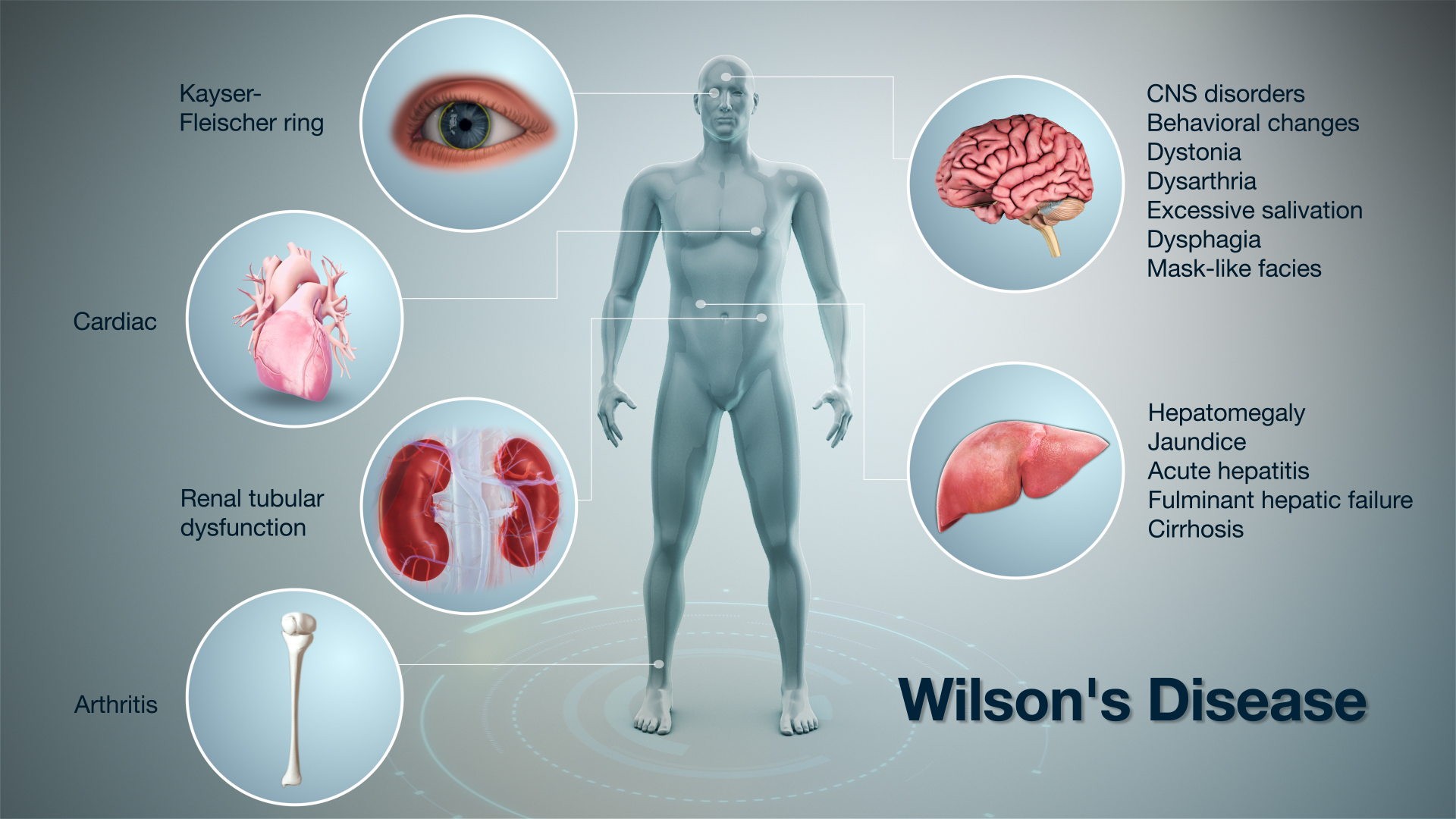Wilson’s disease is a rare genetic disorder in which there is copper poisoning in the body. It is also known as hepatolenticular degeneration and progressive lenticular degeneration. Copper is essential in developing healthy bones, nerves, collagen, and melanin. Copper from food is absorbed by the body and the excess is secreted out from the body through the liver. However, in people with this disease, the liver is not able to eliminate the excess copper and this excess copper builds up in the brain, liver, eyes, and other vital organs. If not diagnosed early, Wilson’s disease could become life-threatening. It usually affects people in the age group from 5 to 35 years but could affect younger or older people too.
Symptoms
Depending upon the parts or organs of the body that are affected, the symptoms of Wilson’s disease vary. The most common signs and symptoms of this disorder are:
- Fatigue
- Abdominal pain
- Lack of appetite
- Weight loss
- Nausea
- Vomiting
- Jaundice
- Itching
- Swelling of legs and abdomen
- Muscle cramps
- Weakness
- Problem with speech
- Problem with physical coordination
Causes
Wilson’s disease is caused due to heredity. But in order to get this disease, one must inherit the defective gene from both parents. If the defective gene is received from only one parent, one does not develop Wilson’s disease but is a carrier of this gene and can pass it on to his/her children.
Treatment
Treatment for Wilson’s disease includes medications and in some severe cases surgery such as liver transplant. In case medicines are prescribed, these have to be taken lifelong. These medicines are chelating agents that bind the copper and then the organs release them into the bloodstream from where the kidneys flush the copper out through urine. Treatment then focuses on preventing the build-up of copper in the body again.
The earlier the diagnosis of Wilson’s disease, the better the chances of a healthy and normal life. Neurological issues and liver damages are reversible with early diagnosis and treatment. At a later stage, the treatment may stop the progression of the disease but the damaging effects cannot be reversed. And if left untreated, it may cause brain damage and liver failure.
Disclaimer: The information in no way constitutes, or should be construed as medical advice. Nor is the above article an endorsement of any research findings discussed in the article an endorsement for any of the source publications.









